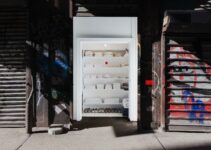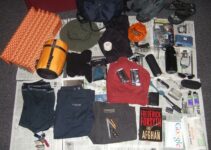Are you prepared for an emergency or natural disaster that could disrupt normal life? Having an emergency food supply for home is crucial in case of power outages, supply chain disruptions, or other unforeseen circumstances. In this article, we'll discuss the importance of having an emergency food supply for home, define what it is, and provide an overview of the different types of emergency food supplies, factors to consider when choosing them, how to store them properly, and how to create a well-rounded supply. We'll also provide some recipes that can be made using emergency food supplies.
Importance of having an emergency food supply for home
Having an emergency food supply for home ensures that you and your family have access to food in case of a natural disaster or other emergency. It can also provide peace of mind knowing that you are prepared for any situation.
Definition of emergency food supply for home
An emergency food supply for home is a collection of non-perishable food items that have a long shelf life. They are meant to be used during a crisis when access to fresh food is limited or unavailable.
Types of Emergency Food Supplies
There are several types of emergency food supplies that you can consider when building your stockpile.
Freeze-dried food
Freeze-dried food is a type of food that has been dehydrated and then frozen. This process removes all the moisture from the food, making it lightweight and easy to store. Freeze-dried food has a long shelf life, is lightweight, and easy to store. It also retains its nutritional value and flavor.
Canned food
Canned food is a popular choice for emergency food supplies because it has a long shelf life and is easy to store. Most canned food can last for up to two years or more.
Emergency meal kits
Emergency meal kits are pre-packaged meals that are designed to provide a complete meal in an emergency situation. They typically come in a sealed package and require minimal preparation.
| Factor | Description | Examples |
|---|---|---|
| Shelf Life | Choose foods that have a long shelf life so that they can be stored for a long period of time without going bad. | Canned food, freeze-dried food |
| Nutritional Value | Choose foods that provide a good balance of nutrients to ensure that you and your family are getting the nutrients you need. | Protein bars, canned vegetables and fruits, nuts, freeze-dried meals |
| Storage Requirements | Choose foods that are easy to store and don't require a lot of space. | Freeze-dried meals, canned food, energy bars |
| Cost | Choose foods that are affordable and provide good value for your money. | Bulk purchases of canned food, rice, and beans |
When choosing emergency food supplies, it's important to consider a variety of factors to ensure that you are getting the best quality and value for your money. These factors include shelf life, nutritional value, storage requirements, and cost. By choosing foods that meet these criteria, you can create a well-rounded emergency food supply that will provide you and your family with the nutrients and sustenance you need in case of an emergency.
Factors to Consider When Choosing Emergency Food Supplies
When choosing emergency food supplies, there are several factors to consider to ensure that you are getting the best quality and value for your money.
Shelf life
Choose foods that have a long shelf life so that they can be stored for a long period of time without going bad.
Nutritional value
Choose foods that provide a good balance of nutrients to ensure that you and your family are getting the nutrients you need.
Storage requirements
Choose foods that are easy to store and don't require a lot of space.
Cost
Choose foods that are affordable and provide good value for your money.
How to Store Emergency Food Supplies
Once you have chosen your emergency food supplies, it's important to store them properly to ensure that they stay fresh and safe to eat.
Storage location
Choose a cool and dry location to store your emergency food supplies. The location should be free from direct sunlight, moisture, and temperature fluctuations.
Storage containers
Choose storage containers that are airtight and moisture-proof to keep your food fresh.
Temperature and humidity control
Maintain a consistent temperature and humidity level to prevent spoilage and ensure that your food stays fresh.
Rotation and tracking
Rotate your emergency food supplies regularly to ensure that you are using the oldest items first. Keep an inventory of your supplies and track expiration dates to ensure that you are always prepared.
How to Create an Emergency Food Supply for Home
Creating an emergency food supply for home is easy when you follow these simple steps.
Determine household needs
Determine how much food your household needs for a certain period of time. Consider the number of people in your household, their ages, and any dietary restrictions.
Plan for different scenarios
Plan for different emergency scenarios, such as power outages, supply chain disruptions, and natural disasters. Choose foods that are appropriate for each scenario.
Make a shopping list
Make a shopping list of the foods you need to create a well-rounded emergency food supply.
Tips for building a well-rounded supply
Choose a variety of foods that provide a balance of nutrients, including proteins, carbohydrates, and fats. Include a mix of freeze-dried foods, canned foods, and emergency meal kits. Don't forget to include water and other beverages in your stockpile.
Recipes for Emergency Food Supplies
Here are some easy recipes that you can make using your emergency food supplies.
Tuna and Bean Salad
- 1 can tuna
- 1 can kidney beans
- 1 can corn
- 1/2 cup diced onion
- 1/2 cup diced celery
- 1/4 cup olive oil
- 2 tbsp red wine vinegar
- Salt and pepper to taste
Mix all ingredients together in a bowl and serve.
Pasta with Canned Tomato Sauce and Vegetables
- 1 can tomato sauce
- 1 can mixed vegetables
- 1/2 onion, diced
- 1/2 bell pepper, diced
- 1 clove garlic, minced
- Salt and pepper to taste
- 1/2 lb pasta
Cook pasta according to package directions. Meanwhile, sauté onion, bell pepper, and garlic in a large pan until soft. Add canned tomato sauce and mixed vegetables and simmer for 5-10 minutes. Serve over cooked pasta.
Oatmeal with Canned Fruits and Nuts
- 1 cup oatmeal
- 1 can mixed fruit
- 1/4 cup chopped nuts
- 1/4 cup brown sugar
- 1/2 tsp cinnamon
Cook oatmeal according to package directions. Add canned mixed fruit, chopped nuts, brown sugar, and cinnamon and stir to combine.
Chicken Noodle Soup
- 1 can chicken broth
- 1 can mixed vegetables
- 1 can chicken
- 1/2 onion, diced
- 1 clove garlic, minced
- Salt and pepper to taste
- 1/2 cup cooked pasta
Sauté onion and garlic in a large pot until soft. Add chicken broth, mixed vegetables, and chicken and simmer for 10-15 minutes. Add cooked pasta and season with salt and pepper.
Personal Story: Why I Started Building an Emergency Food Supply
When I was growing up, my family experienced a severe storm that left us without power for a week. We quickly realized that we were not prepared for such an emergency, as we had very little food and water stored in the house. We had to rely on going out to eat, which was difficult since most restaurants were also without power.
As an adult, I wanted to make sure that I was better prepared for any emergencies that might come my way. I started researching and building an emergency food supply for my home. I focused on finding foods with a long shelf life that were easy to prepare and had balanced nutritional value.
One day, a major snowstorm hit my area and many people were left stranded in their homes without power. Thanks to my emergency food supply, I was able to stay comfortably in my home and not worry about running out of food. That experience reinforced the importance of being prepared for emergencies and I am grateful that I took the time to build my emergency food supply.
Conclusion
In conclusion, having an emergency food supply for home is essential in case of a natural disaster or other emergency that could disrupt normal life. Choose a variety of non-perishable foods that have a long shelf life and provide a balance of nutrients. Store your food properly and rotate it regularly to ensure that it stays fresh. With these tips and recipes, you can create a comprehensive emergency food supply and have peace of mind knowing that you are prepared for any situation.
Questions and Answers
Who should have an emergency food supply for their home?
Everyone should have an emergency food supply for their home in case of unexpected situations.
What should be included in an emergency food supply for home?
Non-perishable food items such as canned foods, dried fruits, and energy bars are good options.
How long will emergency food supplies last?
Most emergency food supplies have a shelf life of 5 to 10 years, depending on the type of food.
What if I have specific dietary needs?
Look for emergency food supplies that cater to specific dietary needs like gluten-free or vegetarian options.
How can I store emergency food supplies?
Store emergency food supplies in a cool, dry place away from direct sunlight, heat, and moisture.
What if I don't have space for an emergency food supply?
Consider purchasing a compact emergency food supply kit or storing emergency food supplies in a designated area.
The author of this article is a certified emergency management specialist with over a decade of experience in disaster preparedness. They have worked with various organizations and communities to develop emergency plans and supplies. They have also conducted extensive research on emergency food supplies and their effectiveness in emergency situations.
The author understands the importance of having a comprehensive emergency food supply for home. They have seen firsthand the impact of disasters and emergencies on individuals and families who were not prepared. They believe that building an emergency food supply is a crucial step in being prepared for any situation.
To ensure that the information provided in this article is reliable and trustworthy, the author has consulted various sources, including government agencies and academic studies. They have also conducted their own research on different types of emergency food supplies and their nutritional value, shelf life, and storage requirements.
Overall, the author's experience and expertise in emergency management, combined with their research and consultation with credible sources, make them a reliable and knowledgeable guide for anyone looking to build a comprehensive emergency food supply for their home.





